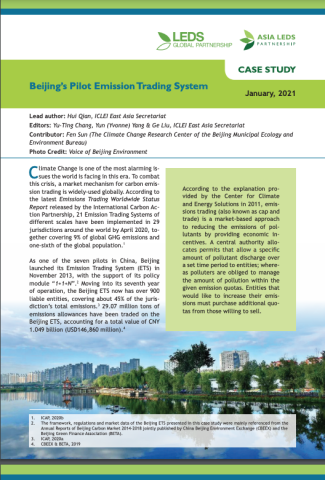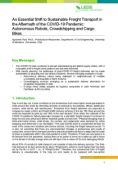
As one of the largest emitters in the world, China is on its way towards reduced carbon emissions without hindering economic development. With the objective to gradually establish a national carbon trading market and achieving the country’s goal of controlling GHG emissions, China’s National Development and Reform Commission approved seven local governments as Emission Trading System (ETS) pilots in 2011, aiming to: 1) contribute to effective control and reduction of carbon emissions; 2) achieve gree nand low carbon development; 3) mitigate haze pollution and emission of other pollutants for better air quality; and 4) develop new financial mechanism for the market.
The case study summarises key points regarding the experience of the Beijing ETS, which was launched in November 2013 as one of the seven pilots in China. Moving into the seventh year of operation, the Beijing ETS now has more than 900 liable entities, covering about 45 percent of the jurisdiction’s total emissions. In total, 29.07 million tons of emissions allowances have been traded via the system, accounting for a total value of CNY 1.049 billion (USD 146,860 million).
The Beijing ETS has successfully triggered regulated entities to take measures and reduce GHG emissions through technological renovation and upgrading, which contributed to reducing the city’s total emissions and expenditure on carbon reduction. The extensive experiences and measures of the Beijing ETS has also been channeled into the launch and the incremental development of China’s national ETS, and has its referential values for other cities who would like to establish local Emission Trading Systems.




